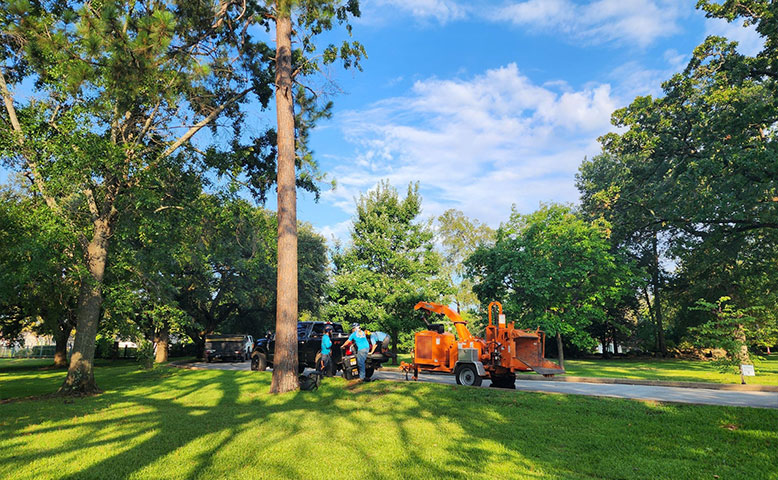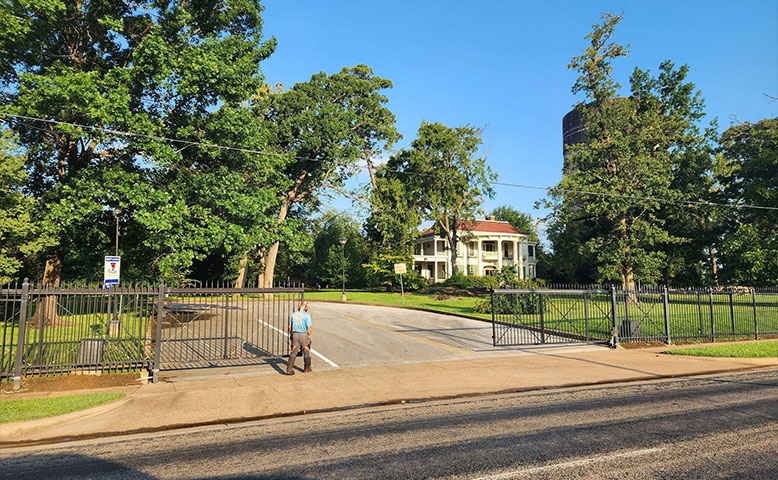
Follow Us :


Trees make yards look nice and feel cool. However, a weak branch or a sick trunk can turn a tree into a safety risk. You might wonder: should you prune the tree or remove it? The right choice depends on what is wrong, where the tree sits, and how much risk you can accept. Pruning can guide growth, take weight off, and improve clearance over roofs, sidewalks, and driveways. Removal ends the risk from that tree, but it also ends shade and habitat. This blog explains both paths in plain words. You’ll learn how arborists judge tree safety, what pruning can and cannot fix, and when removal is the safer move. Use it to choose calmly and carefully.
Tree Risks: What You Need To Know
A tree can fail in many ways. Branches split, trunks crack, and roots lose grip in wet soil. Each failure has warning signs. Learn to spot them early. Look for dead wood that snaps instead of bends, mushrooms on the trunk, bark falling off, or a sudden lean after a storm. Branch unions are shaped like a “V” with bark tucked inside, and they often tear in the wind. Large over-extended limbs above roofs carry big bending loads. Roots cut for a sidewalk or trench may no longer anchor the tree. Note what sits under the tree, too. If a heavy limb hangs over a bedroom or a busy path, even a small risk matters. Risk = (chance of failure) × (what it can hit).
When Pruning Solves The Safety Problem Best
Pruning helps when the tree is healthy, but parts are risky. If branches are too long, reduction cuts can shorten them back to a strong side branch. This lowers the wind load and weight on the union. If the canopy is dense, selective thinning (not over-thinning) lets wind pass through. Good practice limits thinning to about 10–20% of live foliage in one visit. For clearance, lift the crown by removing low branches over sidewalks or roofs, keeping the live crown on at least the upper 60% of the tree’s height. Pruning is also right for young trees with poor shape. Early cuts make strong branch angles and reduce future defects. If decay is minor and well away from the trunk center, pruning may be enough to manage risk while keeping shade and wildlife value.
When Removal Becomes The Only Safe Choice
Sometimes the safest fix is to take the tree down. If the trunk has deep cracks, a large hollow, or decay near the base, the whole structure is weak. A lean that changes after a storm often results in root failure. Mushrooms at the base can signal root or butt rot, which is hard to stop. If more than about one-third of the trunk’s diameter is hollow or decayed (measured with a drill-resistance tool or sonic test), risk can be high even on calm days. When major roots are cut for a driveway or sewer line, the tree may never regain a firm hold. Also consider size and targets: a huge, unstable tree over a child’s room brings unacceptable risk. In these cases, removal ends the hazard now instead of hoping bad weather stays away.
How Arborists Judge Tree Structure And Health
Arborists use simple checks and some helpful tools. They study branch unions, looking for strong “U” shapes rather than tight “V” angles. They test for dead wood with a pole saw or by sound: dead wood often sounds hollow when tapped. They inspect the root flare (where the trunk widens at the ground). Buried flares or girdling roots can point to future failure. Tools to add data include a diameter tape measure and DBH (diameter at breast height). A resistograph shows decay depth by how easily a fine drill passes. A sonic tomograph maps internal hollow areas by timing sound waves through the trunk. With these clues, arborists rate the likelihood of failure and the severity of targets. Then they choose to prune to reduce load, brace or cable a weak union, or remove if risks remain too high.
Technical Basics Of Safe Pruning And Cuts
Good pruning follows simple rules. Use “target pruning” at the branch collar—the swollen area where a branch meets the trunk or larger limb. Make three cuts on larger limbs: an undercut a few inches out, a top cut farther out to drop the weight, then the final cut just outside the branch collar. This keeps bark from tearing and helps the wound seal. Do not leave stubs; do not cut flush into the trunk. For reduction, cut back to a side branch at least one-third the size of the removed limb. Avoid topping, which leaves weak sprouts and decay. Follow ANSI A300 pruning standards as a guide. Clean tools and avoid pruning when disease spread is likely (for example, avoid oak pruning during high beetle activity). For power lines, only qualified line-clearance crews should work.
Real Costs, Permits, And Property Liability Factors
Costs depend on tree size, access, and risk. Pruning a small street tree may be far less than removing a tall oak over a roof with crane access. Add cost for tight yards, fences, or nearby lines. Some cities require permits to remove certain species or trees above a set diameter. Fines can be high if you skip this step. Ask about utility line clearance rules, too. On liability, homeowners are often responsible for trees on their land. If a known hazard falls and causes damage, insurance questions may follow. Keep records: written assessments, photos, and invoices for pruning or removal show you acted with care. Also, ask about debris hauling and stump grinding, and whether the quote includes traffic control if work touches a street.
Storm Prep: Reduce Falling Branch And Root Risks
Storms expose weak points fast. Before storm season, large trees should be inspected. Reduce long, heavy limbs with proper cuts to lower leverage. Secure or remove branches that cross and rub, since wounds from rubbing invite decay. Make sure the root flare is visible; soil piled high against the trunk holds moisture and invites rot. Fix grading that traps water over roots. Never pile mulch like a “volcano” on the trunk; keep it 3–4 inches deep, pulled back a few inches from the bark. If past work left a topped crown, plan staged restoration pruning over several years to rebuild a strong structure. After a storm, treat broken limbs with clean cuts. Do not touch branches near live lines; call the utility or an arborist who is cleared for that work.
Simple Care Steps To Avoid Big Hazards
Small habits lower risk over many years. Water young trees deeply but not too often, so roots grow down. Stakes are taken only if needed, and stakes are removed within a year. Train a strong single leader on species that need it. Choose species fit for your soil and space; avoid trees that outgrow the site and need heavy cuts every few years. Protect roots during projects: Set a simple fence at least out to the drip line so machines do not compact the soil. Never cut main roots for patios or pipes without a plan. Have a regular pruning cycle: every 2–5 years for most landscape trees, adjusted by growth rate. Keep notes on work dates and findings so you spot changes early and act before small issues become a real danger.
Conclusion: Choose The Right Fix With Care
Pruning is right when the tree is sound, and the risk comes from shape, length, or minor defects. Removal is right when decay, root loss, or major cracks make failure too likely—especially over homes or busy areas. Use clear signs, simple math on targets, and professional advice to choose. If you need help, Castle’s Tree Service can handle safe pruning that follows standards and keeps trees strong. They are also available for emergency services when storms strike or damage appears. Acting now protects your family, your home, and the trees you want to keep.